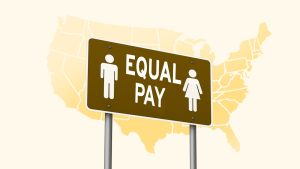In 2025, the United States operates under the tax framework established by the 2017 Tax Cuts and Jobs Act (TCJA) during President Donald Trump’s first administration. In May 2025, the House of Representatives passed the “One Big Beautiful Bill,” aiming to make the TCJA provisions permanent and introduce additional tax changes. However, this legislation is currently under Senate consideration and has not yet been signed into law. Therefore, for the 2025 tax year, the existing TCJA provisions continue to govern federal taxation.
Whose Tax Plan Are We Under in 2025?
The TCJA, which Trump signed into law in December 2017, introduced sweeping changes to individual and corporate taxation. The legislation reduced income tax rates and almost doubled the standard deduction from $6,350 for individuals in 2017 to $12,000 in 2018. The tax plan also eliminated personal exemptions and put a $10,000 cap on the state and local tax (SALT) deduction.
However, these provisions are only set to last through 2025 unless extended via the One Big Beautiful Bill or different legislation.
What Changed Under the TCJA?

Before the TCJA, the tax code followed a structure established by the American Taxpayer Relief Act of 2012, enacted during the Obama administration. That law preserved many of the Bush-era tax cuts for lower and middle-income households while allowing rates for top earners to rise. It created a seven-bracket system with a top rate of 39.6% and included personal exemptions and smaller standard deductions.
Here is a side-by-side comparison of how the TCJA and ATRA (as it stood in 2017) differ:
| Tax Provision | TCJA | ATRA |
|---|---|---|
| Number of Tax Brackets | 7 | 7 |
| Top Individual Tax Rate | 37% | 39.6% |
| Standard Deduction | $15,000 for individuals and $30,000 for married couples (in 2025) | $6,500 for single filers; $13,000 for married filing jointly (in 2017) |
| Personal Exemptions | Eliminated | $4,050 per person in 2017; subject to phase-out at higher income levels |
| Child Tax Credit | $2,000 per qualifying child ($1,700 refundable) | $1,000 per qualifying child; non-refundable |
| State and Local Tax Deduction | $10,000 limit | Unlimited |
| Mortgage Interest Deduction | Interest deductible on mortgage debt up to $750,000 | Interest deductible on mortgage debt up to $1 million |
| Corporate Tax Rate | Flat 21% | Up to 35% |
| Alternative Minimum Tax (AMT) | Higher exemption amounts; fewer taxpayers affected | Lower exemption amounts; more taxpayers affected |
| Estate Tax Exemption | $13.99 million per individual (in 2025) | $5.49 million per individual (in 2017) |
What Are the Federal Income Tax Brackets in 2025?
For tax year 2025, the Internal Revenue Service (IRS) has adjusted federal income tax brackets to account for inflation. The tax rates and corresponding income ranges for different filing statuses are as follows:
| Rate | Single | Married, Filing Jointly | Married, Filing Separately | Head of Household |
|---|---|---|---|---|
| 10% | $0 – $11,925 | $0 – $23,850 | $0 – $11,925 | $0 – $17,000 |
| 12% | $11,925 – $48,475 | $23,850 – $96,950 | $11,925 – $48,475 | $17,000 – $64,850 |
| 22% | $48,475 – $103,350 | $96,950 – $206,700 | $48,475 – $103,350 | $64,850 – $103,350 |
| 24% | $103,350 – $197,300 | $206,700 – $394,600 | $103,350 – $197,300 | $103,350 – $197,300 |
| 32% | $197,300 – $250,525 | $394,600 – $501,050 | $197,300 – $250,525 | $197,300 – $250,500 |
| 35% | $250,525 – $626,350 | $501,050 – $751,600 | $250,525 – $375,800 | $250,500 – $626,350 |
| 37% | $626,350+ | $751,600+ | $375,800+ | $626,350+ |
How Will Things Change Under Trump’s New Tax Plan?
If enacted, the One Big Beautiful Bill would introduce several tax changes. These proposed changes build on the TCJA and aim to extend or expand key tax provisions that would otherwise expire.
Below is a breakdown of the bill’s main components.
Higher Standard Deduction
The bill would raise the standard deduction to $16,000 for single filers and $32,000 for married couples filing jointly. An additional $4,000 deduction would apply to individuals over age 65, although it would be phased out for higher-income households. This provision would replace the lower standard deduction scheduled to return in 2026 if the TCJA expires.
Expanded Child Tax Credit
The child tax credit would temporarily increase from $2,000 to $2,500 per qualifying child through 2028. Only children with valid Social Security numbers would qualify, and the refundable portion of the credit would remain capped at $1,700.
Higher SALT Deduction Cap
The bill would increase the cap on the SALT deduction from $10,000 to $40,000 for households earning less than $500,000. This change would offer significant relief to taxpayers in high-tax states, especially those unable to itemize deductions under current law.
Tax Breaks on Tips and Overtime Pay
From 2025 through 2028, the bill would exclude tips and overtime pay from federal income taxes. To qualify, taxpayers must report their tip income and have a valid Social Security number. This benefit would not apply to highly compensated employees earning more than $160,000 per year.
Increased Estate Tax Exemption
The estate tax exemption would rise to $15 million per individual, up from $13.99 million in 2025. This adjustment would further reduce estate tax exposure for high-net-worth households and continue the trend of shielding more wealth from federal estate taxation.
Bottom Line

The current tax code reflects a blend of legislative decisions shaped over more than a decade, with another round of potential changes on the horizon. While the TCJA continues to define tax policy in 2025, lawmakers are already proposing new provisions that could reshape deductions, credits and income thresholds in the coming years. These shifts offer a preview of how future tax burdens may be distributed across income levels, depending on what version of the proposals becomes law.
Tax Planning Tips
- A financial advisor can help create a personalized tax strategy that aligns with your income, investments and long-term goals. Finding a financial advisor doesn’t have to be hard. SmartAsset’s free tool matches you with vetted financial advisors who serve your area, and you can have a free introductory call with your advisor matches to decide which one you feel is right for you. If you’re ready to find an advisor who can help you achieve your financial goals, get started now.
- Review whether it makes more sense to itemize deductions or take the standard deduction. This decision can change from year to year based on your expenses and income level—especially under new or proposed tax legislation.
Photo credit: ©iStock.com/WANAN YOSSINGKUM, ©iStock.com/Moment Makers Group, ©iStock.com/Pra-chid
Read the full article here









